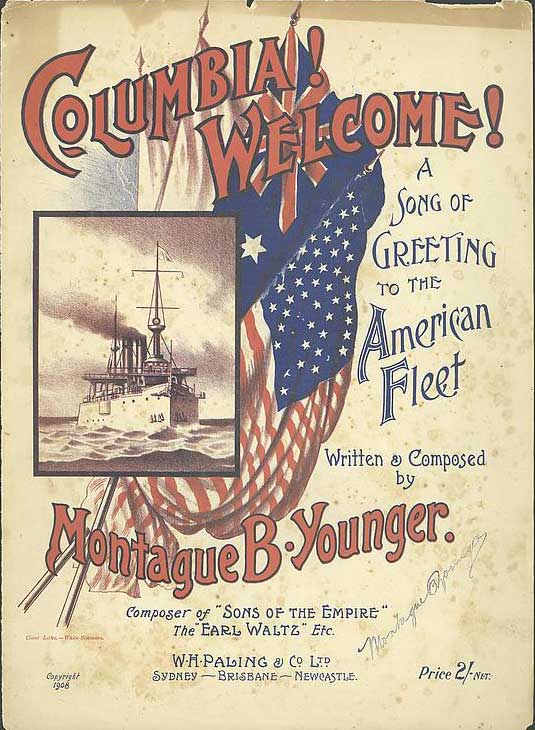 Sheet music cover for 'Columbia! Welcome!', 1908
Sheet music cover for 'Columbia! Welcome!', 1908
TLF ID R2856
This is the front cover of the music score for the song 'Columbia! Welcome! A Song of Greeting to the American Fleet', composed by Montague B Younger. The cover shows a line drawing of a US Navy warship, with the Australian and American flags behind. The three-page booklet was published in Sydney by W H Paling and Company in 1908.
